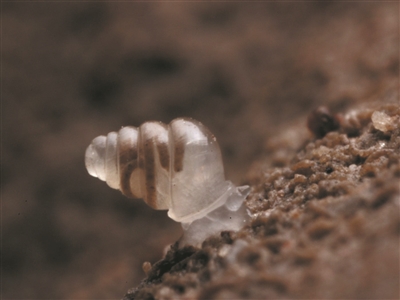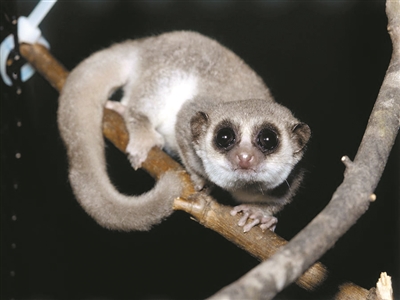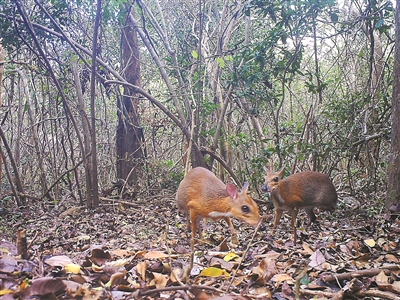
Translucent snail

Pink dolphin

Xiaoyu Wa Kanda

Tapanuli orangutan

Long tail dwarf lemur

Puji horned lizard

Minimum frog

Silver-backed musk deer

Small-pointed raccoon

Wannunu rat
Frontiers of science and technology
The earth is full of novel life forms, most of which we humans don’t know. A study in 2011 estimated that scientists had not identified 86% species on land and 91% species in the ocean.
Every year, scientists go to remote mountain forests and go deep into the deepest part of the ocean to find new animals. They find strange creatures in extreme environments and unknown mammals in ordinary places. In the past ten years, scientists have discovered many interesting animals, from the giant mouse to the smallest frog in the world.
Text/Guangzhou Daily All-Media Reporter Wen Junhua compiled
Translucent snail
In one of the deepest cave systems in the world, scientists have discovered a new translucent snail. This new species, Zospeum tholussum, lives 980 meters underground in the Lukina Jama-Trojama cave system in Croatia. Because there is no light so far below the surface of the earth, the little snail doesn’t need vision.
Pink dolphin
Through DNA testing, scientists found a new pink dolphin in the Araguaya River basin of Amazon. According to National Geographic, the dolphin in Aragua Bay is the first new species of dolphin discovered in a century.
Xiaoyu Wa Kanda
Researchers have discovered an African fish with shiny purple scales and named it Wa Kanda, a fictional home in Marvel Comics Black Panther. Its deep purple scales are arranged in a chain, which reminds scientists of the high-tech battle suit worn by the superhero Panther.
The rarest species of Tapanuli orangutan
In 2017, researchers announced that the newly discovered Tapanuli orangutan is the seventh known species of apes and the rarest species in the world. At present, there are only about 800 Tapanuli orangutans left on the earth, and they are threatened by hunting and habitat loss.
"Apes are one of the most studied species in the world. If we can still find new species in this category after 200 years of biological research, does it mean that more new information needs to be discovered about other species that we ignore? " Environmental protection scientist Eric megard said.
Long tail dwarf lemur
Another lovely arboreal animal, the long-tailed dwarf lemur, is smaller than a squirrel. It is the only known primate that hibernates for a long time. In order to prepare for seven months’ sleep, these animals will gobble up fruits and flowers and store 40% of their body fat in their tails.
Previously, the last dwarf lemur died in 1875, and since then, people have never seen their whereabouts, so they were also classified as extinct animals, and later they were found in Madagascar.
Puji horned lizard
Some newly discovered creatures are not so cute. Phuket horned lizard is a kind of forest lizard, which lives in Phuket in southwest Thailand. Although it looks fierce, it feeds on insects and is harmless to human beings.
The smallest frog: smaller than a dime
A frog smaller than a dime was found in the rain forest of New Guinea in 2012. It is the smallest vertebrate in the world. This frog is only 7.7 mm long on average, lives in southern Papua New Guinea and feeds on invertebrates like mites.
"People keep finding smaller and smaller frogs, which is really amazing." Robin Moore, an amphibian expert, said, "They are adapting and filling an area that no other species can fill."
Silver-backed musk deer
In the forests of Vietnam, scientists discovered the long-lost silverback musk deer in November. Although strictly speaking, this is not a newly discovered species, environmentalists have worried that the silverback musk deer has become extinct.
Small-pointed raccoon
The little pointed-nosed raccoon is the smallest member of the known raccoon family and was found by scientists in the cloud forest of Ecuador. "The era of discovery is not over yet." Helgen, director of the Mammal Museum of the Smithsonian National Museum of Natural History, told National Geographic at the time, "In 2013, we discovered this spectacular and beautiful animal, and there will be more discoveries in the future."
Wannunu rat
The local people in Solomon Islands have been talking about a kind of coconut-eating, nearly 2-Jin-long Wannu mouse, but no scientists have ever confirmed its existence. Until 2017, a big mouse fell from a tree cut down by a lumberjack to a park ranger.
"This is the first mouse found in Solomon in 80 years, and people have not tried it — — It’s just hard to find. " Lavery, the first mammal scientist to identify the species through DNA analysis, said.
Because of the development of logging industry, scientists think that this kind of mouse is on the verge of extinction. The mouse that Lavery found in the fallen tree died soon. "For this mouse, if we don’t find it now, it may never be found." He said. "The area where it was found is one of the only remaining uncultivated forest areas."